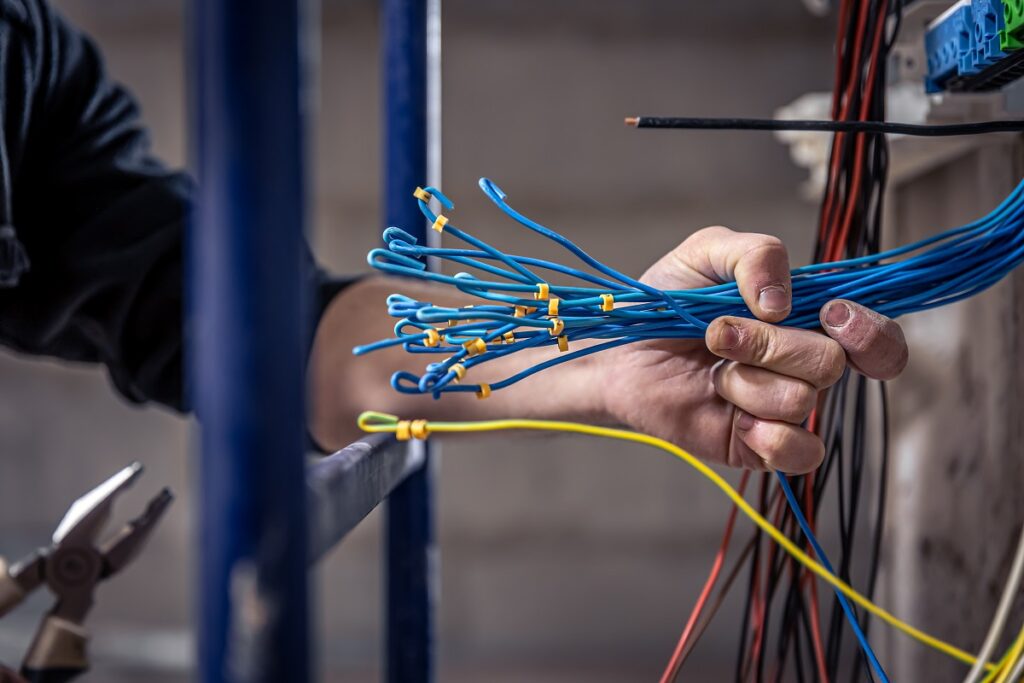In today’s rapidly evolving technological landscape, the paramount importance of safety in electrical installations cannot be overstated. Among the various safety measures, flame-retardant cables emerge as a critical component in mitigating the risks associated with fire incidents. These cables, designed with specific materials to resist the spread of fire, play a pivotal role in safeguarding lives, property, and infrastructure. Understanding the intricacies of fire ratings and the proper utilization of flame-retardant cables are fundamental steps towards ensuring enhanced safety standards. Let’s delve deeper into this crucial aspect of electrical infrastructure.
The Role of Flame-Retardant Cables in Safety
Flame-retardant cables are meticulously engineered to impede the propagation of fire, thereby containing its impact and allowing for timely evacuation and firefighting efforts. These cables are crafted from materials that possess inherent fire-resistant properties or are coated with flame-retardant substances, making them integral components in fire safety systems. In the event of a fire, flame-retardant cables play a pivotal role in limiting the spread of flames, minimizing the risk of injury, and reducing property damage. Their ability to withstand high temperatures and maintain functionality under duress underscores their importance in ensuring safety across various environments.
Types of Flame-Retardant Cables
Low Smoke Zero Halogen (LSZH) Cables: LSZH cables are engineered to emit minimal smoke and toxic fumes when exposed to fire. This characteristic makes them particularly suitable for use in confined spaces, such as commercial buildings, transportation vehicles, and densely populated areas. By reducing the emission of harmful substances during combustion, LSZH cables contribute to safer evacuation procedures and facilitate clearer visibility for emergency responders.
Fire-Resistant Cables: Fire-resistant cables are constructed using materials that possess exceptional resilience against fire hazards. These cables are designed to maintain their structural integrity and electrical functionality even in the presence of intense heat and flames. Commonly utilized in critical infrastructure and high-risk environments, fire-resistant cables ensure the continuity of vital operations during fire emergencies, thereby preventing disruptions and potential catastrophic consequences.
Importance of Flame-Retardant Properties
The flame-retardant properties inherent in these cables serve as a proactive measure to mitigate the risks associated with fire incidents. By impeding the rapid spread of flames and limiting the release of hazardous by-products, flame-retardant cables contribute significantly to overall safety standards. Their deployment in residential, commercial, and industrial settings underscores their versatility and effectiveness in safeguarding lives and property. Additionally, the adoption of flame-retardant cables aligns with regulatory requirements and industry standards, ensuring compliance with stringent safety protocols.

Understanding Fire Ratings
Fire ratings categorize cables based on their ability to withstand fire and maintain functionality under specified conditions. These ratings provide valuable insights into the performance of cables in the event of a fire, enabling informed decision-making during installations. Understanding the nuances of fire ratings is imperative for selecting the appropriate cables for specific applications and environments. By evaluating factors such as flame propagation, smoke emission, and toxicity, stakeholders can identify the most suitable cable types to address their safety requirements effectively.
Key Fire Rating Standards
Before installation, assess the site for potential hazards such as moisture, heat sources, and physical obstructions. Identify any existing electrical systems or utilities to avoid accidental damage during installation. Additionally, consider factors such as cable routing, accessibility, and environmental conditions to ensure a safe and efficient installation process.
NEC (National Electrical Code)
The NEC establishes comprehensive guidelines for electrical installations, including specifications for cable types and fire ratings. Cables classified under different NEC categories, such as CMR (Riser), CMP (Plenum), and CM (Communications), adhere to specific fire safety standards tailored to diverse environments. Compliance with NEC standards ensures the integrity and safety of electrical systems, thereby mitigating the risks associated with fire hazards.
IEC (International Electrotechnical Commission)
The IEC plays a pivotal role in harmonizing international standards for electrical equipment and systems. IEC fire rating standards focus on evaluating the fire behavior, smoke emission, and toxicity of cables to ensure interoperability and global consistency in safety regulations. Adherence to IEC standards facilitates seamless integration of electrical components across diverse geographical regions, promoting enhanced safety and reliability in infrastructure deployments.
Impact of Fire Ratings on Cable Selection
The consideration of fire ratings is paramount in the selection and installation of cables, as it directly influences the safety and performance of electrical systems. By aligning cable choices with specific fire rating requirements, stakeholders can mitigate the risks of fire-related incidents and ensure compliance with regulatory mandates. Factors such as building codes, occupancy types, and environmental conditions play a crucial role in determining the appropriate fire rating standards for cable installations. By conducting thorough assessments and consulting with industry experts, stakeholders can make informed decisions regarding cable selection and effectively mitigate fire hazards in their respective settings.

Installation Best Practices
Proper installation practices are essential for maximizing the effectiveness of flame-retardant cables and ensuring overall safety in electrical systems. Adhering to best practices mitigates risks and enhances the resilience of infrastructure against fire hazards, thereby safeguarding lives and property. From cable routing to termination techniques, every aspect of the installation process warrants careful attention to minimize vulnerabilities and optimize system performance.
Tips for Safe Installation
Maintain Proper Cable Management: Adequate cable management is essential for preventing overcrowding and minimizing the risk of cable damage or overheating. Properly routing cables through conduits, trays, and raceways ensures optimal airflow and heat dissipation, thereby reducing the likelihood of fire incidents due to thermal stress.
Use Compatible Components: The selection of compatible components, including connectors, fasteners, and mounting hardware, is critical for ensuring the integrity of cable installations. Mismatched components or improper terminations can compromise the electrical continuity of circuits and increase the risk of arcing or insulation breakdown, leading to potential fire hazards.
Importance of Professional Installation
Professional installation by qualified technicians is indispensable for ensuring the proper handling and placement of flame-retardant cables. Certified installers possess the requisite expertise and knowledge to execute installations in accordance with industry standards and regulatory requirements. By entrusting installations to trained professionals, stakeholders can mitigate the risks of installation errors and ensure the optimal performance of flame-retardant cables in fire emergencies.
About Pure CU: Wire and Cable
At Pure CU, we take pride in being a leading provider of fire and heat-resistant wires and cable, ensuring quality, reliability, and innovation since 1984. Based in Karachi, we are dedicated to delivering superior electrical solutions crafted with advanced manufacturing techniques and backed by four decades of expertise. Trust Pure CU to power your needs with products designed for excellence and safety.
Conclusion
In conclusion, the implementation of flame-retardant cables is paramount in safeguarding lives, property, and critical infrastructure against the devastating effects of fire. By understanding fire ratings, deploying appropriate cable types, and adhering to best installation practices, stakeholders can create safer environments and mitigate the impact of fire-related incidents. From residential buildings to industrial facilities, the adoption of flame-retardant cables underscores a commitment to safety and resilience in the face of unforeseen emergencies.
Remember, when it comes to safety, every detail matters, and investing in flame-retardant cables is an investment in protection and peace of mind.

